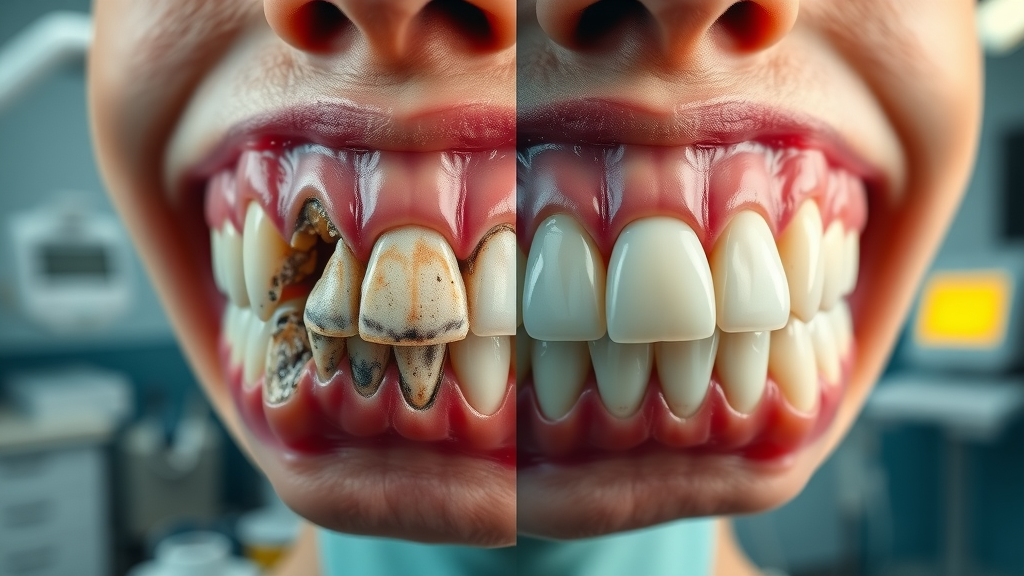Did you know that nearly 25% of American children develop cavities before entering kindergarten? Early childhood tooth decay isn’t just common—it’s a growing concern for parents everywhere. Many families wonder: Do kids need fluoride for strong teeth, or are there risks they should be aware of? This comprehensive guide cuts through the confusion, answers crucial parent questions, and provides clear, science-backed advice so you can help your child achieve lifelong oral health.
- Did you know that nearly 25% of American children develop cavities before entering kindergarten? Understanding how fluoride can prevent these early dental problems is key for parents seeking the best oral health for their children.
Understanding Fluoride: Why Do Kids Need Fluoride for Oral Health?
-
What you’ll discover:
- The science behind fluoride’s effectiveness
- The balance between too little and too much fluoride
- Fluoride options: supplements, treatments, and water fluoridation
- Common misconceptions about pediatric fluoride use
Fluoride is a mineral found naturally in water and foods, and it plays a pivotal role in children’s oral health . When children use fluoride, either through drinking water, toothpaste, or topical fluoride treatments, it helps strengthen the outer surface of their teeth—called tooth enamel —making it more resistant to the acids that cause tooth decay . For young children , who are still learning proper dental care habits, fluoride acts like a shield to help prevent tooth problems long before they start.
Understanding the right amount of fluoride for kids is essential. While an appropriate intake can prevent early decay , excessive fluoride introduces a risk of dental fluorosis , a mild cosmetic condition. This balance can sometimes be challenging for parents to navigate, especially when considering the variety of fluoride treatment options—ranging from supplements to fluoride toothpaste and even fluoridated drinking water . Knowing how much your child needs at each stage will ensure that you maximize the benefits while avoiding any risks.
As you learn about the importance of fluoride for children, you might also be interested in understanding how to address visible signs of excess fluoride, such as white spots on teeth. For practical advice on managing and treating these white spots, explore these seven tips to treat white spots on teeth and help your child maintain a confident, healthy smile.
How Topical Fluoride and Fluoride Treatments Support Children’s Oral Health
What is Topical Fluoride and How Does It Help Prevent Cavities?
Topical fluoride refers to fluoride that is applied directly to the surface of teeth. This can be done through fluoride toothpaste , mouth rinses, or professional treatments such as varnishes and gels at a dental office. The magic of topical fluoride lies in its ability to remineralize and repair teeth at a microscopic level—even reversing the earliest stages of tooth decay before cavities form. When kids brush with fluoride toothpaste, or have a dentist apply gels or varnishes, their teeth are better protected against bacteria and acids from everyday foods.
This kind of dental care is especially important for young children who may not always brush perfectly. Children starting at an early age with regular exposure to topical fluoride have been shown to have lower rates of cavities and stronger tooth enamel throughout childhood.
Fluoride Treatment Options for Kids at the Dentist and at Home
There are many ways to deliver the protective power of fluoride to a child’s teeth. At home, daily brushing with age-appropriate fluoride toothpaste —using a smear for little ones under age 3 and a pea-sized amount past age 3—is a simple but powerful step. For children at higher risk of early decay , a pediatric dentist may recommend additional professional fluoride treatments such as gels, varnishes, or mouth rinses during regular checkups.
Understanding these treatment options is key: Professional fluoride applications are concentrated and designed to offer deep protection to developing teeth. Some families may also use mouth rinses with fluoride, especially where water supplies are low in fluoride or tap water is not fluoridated. By selecting the right combination of home and professional treatments, you can ensure robust cavity prevention for your child.
"Fluoride is nature’s cavity fighter, strengthening teeth and reversing early tooth decay in children." – Dr. Jane Patterson, Pediatric Dentist
The Role of Drinking Water: Do Kids Need Fluoride in Water?
Community Water Fluoridation and Its Impact on Children’s Oral Health
One of the most effective and widely studied public health measures in the United States is community water fluoridation . Most municipal tap water supplies are adjusted to provide a safe, optimal fluoride level —usually around 0.7 parts per million (ppm)—which protects against tooth decay for the entire community, especially young children . According to dental and public health experts, children who drink fluoridated drinking water are far less likely to develop cavities compared to those in non-fluoridated areas.
However, not all water sources contain the same amount of fluoride. Bottled water often contains little to no fluoride, and levels in well water can vary significantly—sometimes lacking enough to protect teeth, or rarely, being too high. This means that families who rely on private wells or bottled water should ask their local health department or care provider to test and monitor fluoride levels to determine if fluoride supplements or professional fluoride treatment is needed for their children.
Comparative Table: Fluoride Levels in Bottled, Tap, and Well Water
| Type of Water | Typical Fluoride Content (ppm) | ADA Recommendation | Impact on Kids' Oral Health |
|---|---|---|---|
| Tap Water (fluoridated) | 0.7 | Yes | Strong cavity protection |
| Bottled Water | 0–0.7 | Varies | Sometimes insufficient |
| Well Water | Varies | Test recommended | May need supplements |
Finding the Right Amount of Fluoride: Balancing Benefits and Risks for Kids
How Much Fluoride Do Kids Need at Each Age?
Determining the right amount of fluoride for children depends on their age, risk factors, and access to fluoridated water or other sources. Infants and toddlers generally need less, while older children require doses optimal for ongoing oral health development. The American Dental Association outlines dosage recommendations: For infants under 6 months, usually no supplement is needed; from 6 months to 3 years, fluoride drops may be prescribed if tap water is not fluoridated; and for children 3 to 16, fluoride toothpaste and regular water supplies often suffice, unless otherwise guided by a pediatric dentist or healthcare provider.
Each child is unique. A dentist may prescribe supplements if routine water sources are inadequate, or decide that additional treatments are unnecessary when water and toothpaste are sufficient. Always consult your child's care provider before adding supplements to avoid exceeding recommended fluoride intake.
Potential Risks of Excess Fluoride in Children
- Mild white streaks on teeth
- Pits or grooves in severe cases
- Preventable by monitoring fluoride sources
While fluoride is safe at recommended levels, consistently consuming too much can lead to dental fluorosis . This most commonly appears as faint white streaks on a child’s teeth and does not affect function—despite how it may look. Only in rare and more severe cases do pits or grooves develop. This risk underscores the importance of monitoring all fluoride sources— tap water , toothpaste, supplements, and even some foods. Preventing dental fluorosis is as simple as using the correct toothpaste amount and staying informed about your water’s fluoride level . If you are unsure about your water supply, ask your dental or primary care provider for advice on testing and recommendations for your child’s needs.
Role of the Pediatric Dentist: Guidance on Fluoride Treatment and Supplements
When Should Children Start Fluoride Treatments at the Dentist?
Major dental health organizations suggest that children should begin professional fluoride treatment soon after their first teeth appear—usually during their initial visit to the pediatric dentist , which should occur by age one. Early application of topical fluoride can significantly reduce the likelihood of developing cavities, especially for those with less access to fluoridated drinking water or with a family history of dental problems. Pediatric dentists assess each child’s cavity risk, recommend the frequency of fluoride varnish applications (typically every 3–6 months), and answer any questions about fluoride safety for your family’s unique situation.
Continuing these professional treatments along with daily brushing using fluoride toothpaste amplifies the effectiveness of both. During dental checkups, dentists also check for early decay and provide advice tailored to your water supply and any risk from excess fluoride exposure.
Do Kids Need Fluoride Supplements? Advice from Pediatric Dental Experts
Not all children need fluoride supplements . The need is determined by several factors: Does your child drink fluoridated tap water ? Do they use bottled water or have private well water? According to dental guidelines, supplements are reserved for children at higher risk of cavities who lack access to fluoridated water and cannot get enough fluoride through toothpaste or related treatments. Your pediatric dentist or primary care provider will assess if your child needs a prescription for fluoride drops or chewable tablets, and they’ll advise on the safe amount of fluoride for your child’s age.
Close monitoring helps avoid over-supplementation—and ensures your child gets just enough to help prevent tooth decay without running the risk of dental fluorosis . Remember: Your care provider is your best resource for personalized fluoride advice.
Does Every Child Need Fluoride Dental Visits?
While the need for professional fluoride treatments may differ based on risk factors and local water fluoride level , every child benefits from regular dental care . Checkups aren’t solely about fluoride—they’re also vital for detecting early decay , teaching good brushing techniques, and reinforcing the role of a balanced amount of fluoride in lifelong oral health. Even if your child receives optimal fluoride through water and toothpaste, consistent visits with a pediatric dentist help ensure oral health milestones are met and that adjustments can be made if a family’s water supply or dietary needs change.
Exploring Fluoride Treatments: In-Office and At-Home Applications for Children
Fluoride Varnishes, Gels, and Rinses: Safety and Recommendations
Fluoride treatments come in several forms—each with distinct advantages for young children . In-office options like fluoride varnishes are painted on teeth and set quickly, allowing for deep penetration even with fidgety patients. Fluoride gels and mouth rinses offer additional in-home tools, particularly for older kids and teens more prone to cavities or orthodontic treatments.
Routine use of professional fluorides and age-appropriate at-home products is considered safe and effective by the American Dental Association, especially when parents supervise the amount. Safety tips include only using products labeled for your child’s age, storing them out of reach, and consulting your primary care provider for advice if your community’s drinking water is not fluoridated.
Common Misconceptions Debunked: Myths About Fluoride Treatment in Kids
- “Fluoride causes health problems” – Scientific evidence shows safety at recommended levels
- “Natural toothpaste is better for kids” – Most lack effective fluoride levels
- “Bottled water is always safe” – Sometimes contains no fluoride
Despite overwhelming evidence of its safety and effectiveness, myths about fluoride are common. Concerns about fluoride causing health problems persist, but decades of research show fluoride is safe at recommended doses. “Natural” fluoride-free toothpaste marketed for young children often lacks proven cavity protection. Lastly, parents might assume all bottled water is safe, but it frequently contains no fluoride at all—offering kids little tooth decay protection. Rely on guidance from your dentist or health department to make informed, science-based decisions that protect your child’s smile.
People Also Ask: Frequently Asked Questions About Kids and Fluoride
Do kids really need fluoride treatment?
- Most children benefit significantly from fluoride treatment, as it helps remineralize tooth enamel and prevents early cavities. The American Dental Association and pediatric dentists widely recommend professional fluoride applications in addition to fluoride toothpaste.
What happens if kids don't use fluoride?
- Children who don’t use fluoride are at higher risk for tooth decay, cavities, and potential tooth infections. Untreated dental problems can affect a child’s nutrition, speech, and school performance.
Do dentists recommend fluoride for kids?
- Dentists and pediatric dental care organizations consistently recommend fluoride for children, starting as teeth emerge. Regular fluoride treatments at dental visits complement daily use of fluoridated toothpaste.
Why don't dentists use fluoride anymore?
- This is a misconception; most dentists continue to use and recommend fluoride therapies. However, some may tailor recommendations based on local water fluoride levels or individual child health factors.
Best Practices: How Parents Can Ensure Their Kids Get the Right Amount of Fluoride
- Use a pea-sized amount of fluoride toothpaste for children over age 3.
- Be mindful of local water fluoride content.
- Ask your dentist about professional fluoride treatments and supplements when appropriate.
- Encourage regular dental check-ups with a pediatric dentist.
Expert Recommendations and Guidelines: Official Advice on Fluoride for Kids
"The benefits of fluoride in preventing cavities far outweigh any minimal risks for children. Our priority is a healthy, confident child’s smile." – American Academy of Pediatric Dentistry
Summary and Next Steps for Your Child’s Oral Health
- Ensure fluoride protection through water, toothpaste, or treatments
- Consult your dentist for personalized advice
- Be informed about the signs of excess or insufficient fluoride
Looking for a Reliable Pediatric Dentist for Fluoride Treatment in Johnstown, OH?
- Contact Johnstown Dental Care for expert fluoride treatments and pediatric dental care for your child: Johnstown Dental Care 370 West Coshocton St. Johnstown, OH 43031 Phone: (470) 967-6046 Website: www.johnstowndentalcare.com Proudly Serving: Johnstown, New Albany, Granville, Alexandria, Pataskala, and surrounding areas in Licking County, Franklin County, and Delaware County.
Take action today: Partner with a pediatric dental expert for the right fluoride solutions—your child’s healthiest smile is just a phone call away!
If you’re committed to your child’s oral health, it’s also important to understand how overall gum health and prevention strategies can impact their smile for years to come. For a deeper dive into maintaining healthy gums and preventing more advanced dental issues, discover our expert resources on periodontal disease prevention and care . Expanding your knowledge in this area will empower you to make proactive choices, ensuring your child’s teeth and gums stay strong and resilient as they grow. Take the next step in your family’s dental wellness journey by exploring advanced tips and comprehensive care strategies today.
Fluoride is a natural mineral that plays a crucial role in preventing tooth decay and strengthening children’s teeth. It works by enhancing the enamel’s resistance to acid attacks from bacteria and sugars in the mouth, thereby reducing the risk of cavities. ( kidshealth.org )
Sources of Fluoride:
-
Fluoridated Water: Many communities add fluoride to their public water supplies, providing a simple and cost-effective method to protect teeth. Drinking fluoridated water has been shown to reduce tooth decay by approximately 25%. ( healthychildren.org )
-
Toothpaste and Mouth Rinses: Using fluoride toothpaste is recommended as soon as a child’s first tooth appears. For children under 3 years old, a smear (the size of a grain of rice) is sufficient, while a pea-sized amount is appropriate for those aged 3 to 6. Supervising brushing ensures that children use the correct amount and learn to spit out the toothpaste. ( healthychildren.org )
-
Professional Treatments: Dentists may apply fluoride varnishes or gels during routine check-ups, especially for children at higher risk of cavities. These treatments provide a concentrated dose of fluoride for enhanced protection. ( childrensdent.com )
Safety and Recommendations:
When used appropriately, fluoride is safe and effective. However, excessive fluoride intake during early childhood can lead to dental fluorosis, a cosmetic condition characterized by faint white streaks on the teeth. To minimize this risk:
-
Use the recommended amount of fluoride toothpaste.
-
Monitor your child’s brushing to prevent swallowing toothpaste.
-
Consult with your dentist or pediatrician about fluoride supplements if your local water supply is not fluoridated. ( healthychildren.org )
In summary, fluoride is essential for children’s oral health, offering significant protection against tooth decay. By ensuring appropriate fluoride exposure through water, toothpaste, and professional treatments, parents can help their children develop strong, healthy teeth.
 Add Row
Add Row  Add
Add 




Write A Comment